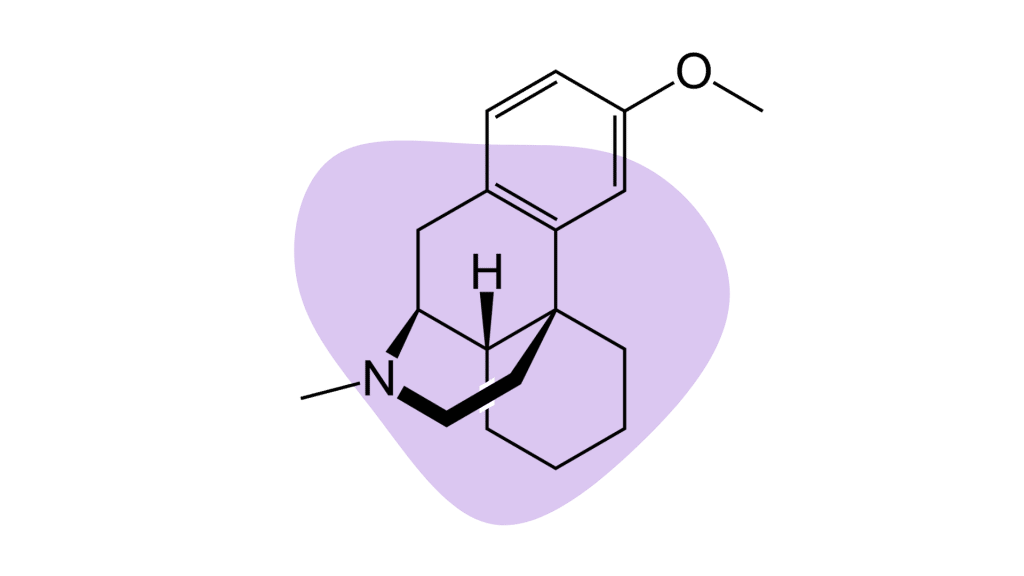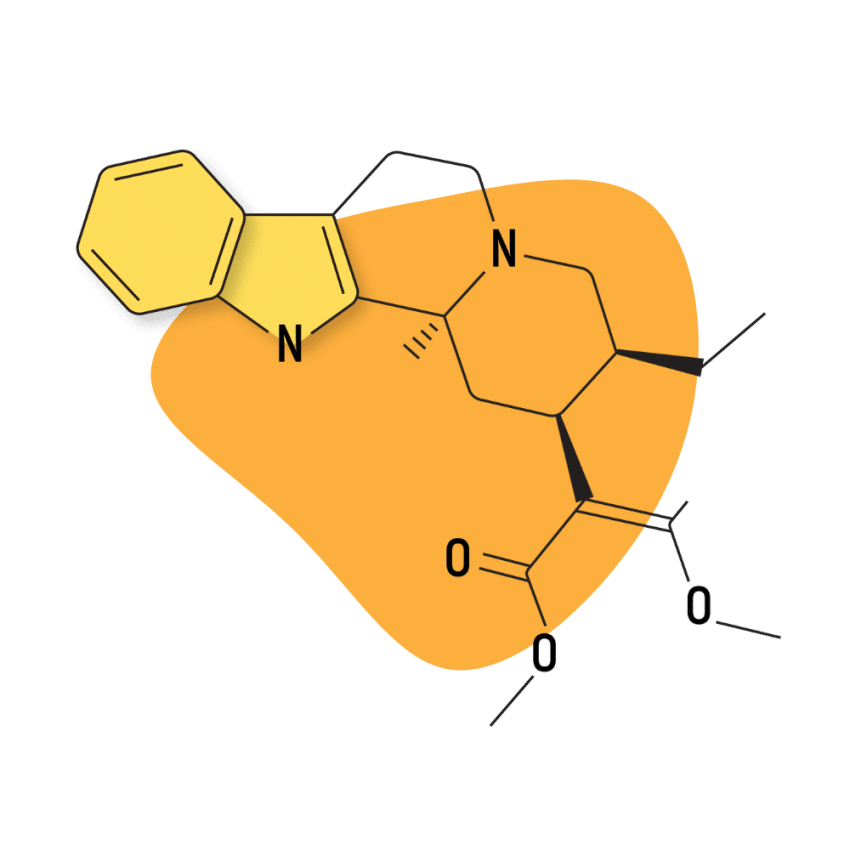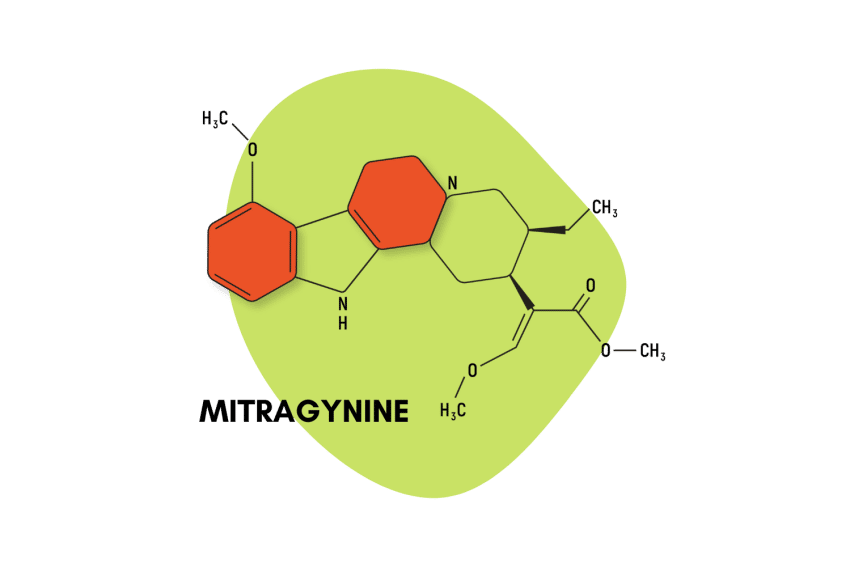Kratom Potentiators: The Ticket to Making Its Effects Last Longer
Regardless of why you use kratom, potentiators can boost and lengthen the effects. Before you try one, though, be aware of the risks and know how to use them safely.

A “potentiator” is anything that increases the effects of another substance.
They’re used to make herbs like kratom more effective with lower doses, enhance the duration of effects, or intensify the experience.
Kratom potentiators can come in handy — but be careful if you decide to try one out. While they can make the effects more pronounced and last longer, they also increase the chances of developing side effects.
Here are 6 types of potentiators people use to get more out of their kratom.
List of Kratom Potentiators:
There are a lot of different substances people use to make the effects of kratom stronger. Some rely on blocking the enzymes that disable kratom’s active alkaloids; others enhance specific effects (such as the opioid-binding, dopaminergic, or NMDA antagonistic actions). Some are used simply to ensure as much of the active ingredients pass through the digestive tract into the blood as possible.
Here’s a list of some of the most notable kratom potentiators we know of:
CYP45 Inhibitors
Most of the supplements or medications we eat has to be metabolized by the liver. Kratom is no exception.
Once metabolized, the alkaloids that do their magic are dismantled and eliminated from the body. A group of enzymes called the CYP450 isoenzymes are largely responsible for performing this task.
The idea is that by consuming other plants or supplements that target the specific enzymes used to disable kratom alkaloids, we can prolong and even strengthen the effect of the herb.
Kratom alkaloids like mitragynine and 7-hydroxymitragynine are broken down by the CYP3A4 enzymes [2], so this is a good place to start.
A few examples of inhibitors for this enzyme include:
- Certain citrus and fruit juices (namely star fruit and grapefruit) [4]
- Black pepper
- Cannabidiol (CBD)
- Tetrahydrocannabinol (THC) [5]
- Turmeric
Black Pepper
Black pepper (Piper nigrum) contains a compound called piperine, which has been shown to enhance the absorption of other foods and supplements in the digestive tract.
This component is often added to supplements for this reason to ensure as much of the active compounds are absorbed as possible.
Some people find that taking piperine or other black pepper extracts before using kratom causes the effects to kick in sooner and peak at a higher level then without the supplement.

Aloe Vera
Aloe vera helps increase the permeability of drugs and vitamins in the intestinal membranes. This may help users absorb more of the active ingredients in kratom.
This method works especially well in people with poor digestion to begin with. Those who already have no problem digesting and absorbing the food or supplements they eat may not notice a difference after taking Aloe vera.
DXM (Dextromethorphan)
DXM (dextromethorphan) is a dissociative drug found in over-the-counter cough medicines. This substance is one of the most common kratom potentators but also one of the most dangerous.
This compound works by blocking the NMDA receptors to induce a state of dissociation disconnection from the self. Users often feel drunk in lower doses and outside their body in higher doses.
When mixed with kratom, DXM significantly increases the psychoactive effects of kratom and reduces the amount of the herb needed to feel its sedative effects.
Of course, all of this also means it’s much more likely to overdo it with either of these substances when mixing so be extremely careful when using this combination. Never mix kratom and DXM alone. Passing out and throwing up could be fatal.

Freezing
One of the best — and safest — ways to potentiate the effects of kratom is to freeze it first. This process breaks the cell walls, making the alkaloids more bioavailable.
Make kratom tea, pop it in the freezer, and let it thaw before drinking (obviously).
This method doesn’t boost the effects of kratom pharmacologically the way the other mentions do, but it does help you get more of the active ingredients out of the kratom you’re using.
Toss ‘n’ Wash
Toss ‘n’ wash is more of a method of consumption than it is a specific potentiator, but it’s relevant here because this method is one of the most efficient ways to get the full effects from kratom.
This method is used to consume the whole, raw powder of kratom, rather than relying on capsules, extracts, or teas. Kratom requires a pretty high dose of the raw leaf (2–10 grams), which doesn’t fit very well in capsules. Users need to consume several caps at a time and wait for the gelatin to dissolve and release the active ingredients.
In a similar capacity, tea is quicker to absorb, but the extraction process used to make the tea is slow and inefficient — leaving much of the active ingredients behind when you throw the remains away.
The toss ‘n’ wash method involves taking a heaping spoonful of kratom powder and knocking it back with some juice or water to wash it down. It delivers high doses of kratom directly to the digestive tract — no need to wait for the gelatin to dissolve, and you get the full efficiency of the leaves.

Potentiation Risks & Side Effects
Before you jump into potentiators, be aware of the risks. Avoid using them if you take other medications, as they could also interfere with those.
Kratom-drug interactions are a very real problem, and combining it with potentiators puts you at risk for worsened side effects — and addiction. It’s generally safe until you use too much too often or combine it with other substances.
Stay safe by limiting your kratom use, especially with potentiators, and talk to your doctor first if you have health problems or use any medications or supplements.
Potentiators & Kratom’s Side Effects
Most of kratom’s side effects are mild and pass quickly. They’re also more likely with potentiators or larger doses — however, many people never experience them.
Here are the most common side effects:
- Nausea
- Vomiting
- Dizziness
- Headaches
- Anxiety
- Dehydration
- Liver injury
- Addiction
If you take too much kratom, you might experience something users fondly call “the wobbles” — dizziness, nausea, and general discomfort. If this happens, grab a bite to eat, sip on some water, lie down, or rest until it passes — and take less next time.
Kratom addiction is another concern with kratom use, and this is compounded with potentiators. Kratom’s alkaloids work on multiple systems — opioid, serotonin, adrenergic, and dopamine, to name a few.
Because of this, it can be easy for people to become dependent on it. However, research shows this is most likely if you have had a previous opioid addiction or use kratom heavily and chronically. Withdrawal symptoms are similar to opioid withdrawal — body aches, cravings, runny nose, diarrhea, depression, and anxiety — but milder and easier to overcome [6].
Related: Is Kratom An Opioid?

How to Minimize the Risks of Kratom
Safe kratom use isn’t complicated — a nice twist in this otherwise messy world.
Follow these tips, and you probably won’t have any trouble.
1. Don’t Mix Kratom With Other Substances
This contradicts the potentiators section, but I cannot stress enough the importance of knowing what you’re doing.
If you take any prescription medication, talk to your doctor before using kratom — even without potentiators.
If you take over-the-counter medication or supplements of any kind, especially herbal, do the research or talk to your doctor.
The risks that come from drug interactions are too real.
2. Take Breaks
The best way to avoid addiction is to prevent building a tolerance by limiting your use. Take as little as possible, and only when necessary. Stop using kratom for a few days every week.
Some people need kratom for pain, which usually requires large, consistent doses. In these cases, it’s imperative to either have an alternative to use for break days or be extra diligent.
If you’re looking for a temporary replacement, try a kratom reset pack, usually consisting of other Mitragyna plants like javanica or hirsuta. Other supplements are available, depending on whether you use kratom for pain, energy, mood, or sleep.
3. Only Use High-Quality Products
Kratom regulation is weak — often non-existent — which puts the responsibility on you, the consumer. Look for kratom that was tested in third-party labs; anything less means you don’t know what you’re consuming, and it could be contaminated or contain fillers or other, more dangerous, substances.

How Long Do Kratom’s Effects Last?
The answer can vary a lot, depending on the kratom strain and dose used, your size, tolerance level, and if you’ve eaten or not, among other things.
In general, you can expect kratom’s effects to last about 3-8 hours. It takes about 20 minutes to kick in, an hour or two to peak, and then the effects start to fade.
It’s possible some strains last longer than others, but this is mostly based on anecdotal evidence — there’s little science to back it up so far. And even if we could narrow a few down, kratom’s alkaloid content varies too much, even within the same vendor. One batch will vary from another; a strain could last extra long one time but be below average the next.
There’s minimal research on kratom’s lesser-known alkaloids — they could play an integral role in the effects and how long they last. It would be similar to how cannabinoids in cannabis cause different effects when they work together (the entourage effect) [1].
How Long Do Kratom’s Alkaloids Stay In the Body?
Kratom’s primary alkaloids, mitragynine and 7-hydroxymitragynine, have half-lives of two to three hours. All traces of the alkaloids are generally out of the body in 24 hours.
FAQs: Kratom 101
Here are some of the most common kratom-related questions we get asked.
1. Is kratom legal?
Yes, mostly, but it’s complicated. In the US, kratom is unregulated at the federal level and in most states. Some states or areas have taken measures to either ban it or put laws in place that oversee how it’s manufactured and sold.
It’s best to look into your local laws for the most updated information since laws change rapidly.
2. What can I use kratom for?
Kratom has a diverse portfolio since it acts on so many systems. People take smaller doses (1-4 grams) for energy, mood, focus, and endurance and use larger amounts (4-8 grams) for pain, insomnia, anxiety, and opioid addiction. Our dosage guide can give you more details.
White strains are better for energy, red strains are known for their analgesic effects, and green strains fall in the middle.
Related: What Is Kratom Used for? A Comprehensive Guide
3. Can kratom show up on a drug test?
Usually not — most drug tests don’t detect kratom’s alkaloids. And because it’s federally unregulated in the US, it’s not usually tested for. However, newer, more intricate tests can detect it and could be used in places where kratom or its alkaloids are illegal.
References
- Huisman, G., Menke, M., Grundmann, O., Schreiber, R., & Mason, N. (2023). Examining The Psychoactive Differences Between Kratom Strains.
- Tanna, R. S., Nguyen, J. T., Hadi, D. L., Layton, M. E., White, J. R., Cech, N. B., … & Paine, M. F. (2023). Clinical assessment of the drug interaction potential of the psychotropic natural product kratom. Clinical Pharmacology & Therapeutics, 113(6), 1315-1325.
- Gerber, W., Steyn, J. D., Kotzé, A. F., & Hamman, J. H. (2018). Beneficial pharmacokinetic drug interactions: a tool to improve the bioavailability of poorly permeable drugs. Pharmaceutics, 10(3), 106.
- Petric, Z., Žuntar, I., Putnik, P., & Bursać Kovačević, D. (2020). Food–drug interactions with fruit juices. Foods, 10(1), 33.
- Stout, S. M., & Cimino, N. M. (2014). Exogenous cannabinoids as substrates, inhibitors, and inducers of human drug metabolizing enzymes: a systematic review. Drug metabolism reviews, 46(1), 86-95.
- Henningfield, J. E., Chawarski, M. C., Garcia-Romeu, A., Grundmann, O., Harun, N., Hassan, Z., … & Huestis, M. A. (2023). Kratom withdrawal: Discussions and conclusions of a scientific expert forum. Drug and Alcohol Dependence Reports, 7.








